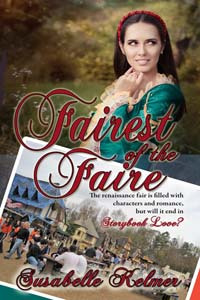Susabelle Kelmer's Blog, page 5
October 31, 2015
Waiting With Bated Breath…
 It’s October 31st. Halloween. All Hallow’s Eve. The night of candy and shenanigans.
It’s October 31st. Halloween. All Hallow’s Eve. The night of candy and shenanigans.
But for tens of thousands of writers around the world, it is National Novel Writing Month Eve. For weeks, our fingers have been itching to start our latest (or first) novel. The National Novel Writing Month challenge is something we look forward to beginning on December 1st every year. We have to wait eleven long months until we can take the challenge again.
And November 1st is just hours away. HOURS. In fact, as you’re reading this, there are places in the world where it is already November 1st, and the novelists have begun.
I have been participating in NaNoWriMo for twelve years. This is my thirteenth attempt. Out of the previous twelve, I “won” every year. I will win this year, too, because that’s how I roll. Me? I have confidence! I always have confidence!
Two of m NaNoWriMo novels have been published. Second Chances was self-published through Lulu.com, and Fairest of the Faire was published by The Wild Rose Press. Both books took several years from writing to publication. That’s because editing is hard, and because I have a day job, a husband, and kids. I have to fit in the writing when I can, between the more mundane parts of my life. But mostly, because editing is hard.
Which might make you wonder why I’d take on the NaNoWriMo challenge, when the ultimate goal is word count (50,000 words in 30 days), rather than quality. But the fact is, until I did NaNoWriMo that first year, I didn’t know I had a whole book in me. I had written for years, but never finished anything. I would start out with bang, but then whimper away at about 12,000 words. A decently-sized romance novel needs to be about 72,000 pages at the very least, and closer to 100,000 if you want a good seller. That first year, I wrote 96,000 words in less than 30 days. And I wrote a story that had a beginning, a middle, AND an end. It was a complete story. I had never in my life done that before. I was shocked at myself, and amazed that I had that in me.
And there really is no turning back. Not every year produces a great read. Some years, I barely make 50K and it’s not even a single story, it’s several small ones that aren’t any good. My last successful year was 2009, when I finished the first draft of Fairest of the Faire. I’m hoping this year will be successful in getting my next novel written. I had thought after I published Fairest that I would be able to produce a book a year. Apparently, I can’t. So maybe a book every other year, then.
For the last two months I’ve been working on polishing up my plotting skills. What always fails for me are the sagging middles of my stories. I’ve tried some basic outlining, and using Blake Snyder’s Save the Cat-style beat sheet work. I’m hoping that has helped, although until I start writing, I won’t know.
So for how, I wait. I will go to my town’s Halloween Parade this morning, so I can see my daughter in her bear costume walking with all the other kids. I am signing books at one of my local bookstores at noon. Then there are pumpkins to carve, bags of candy to be opened, a fire pit to set up in the driveway, candles and lights to be lit, for the trick-or-treaters. And all the while, my back burner will be going strong, working on my story.
So, Happy NaNoWriMo Eve to you! Will you be participating this year? Have you participated in the past? Tell me in the comments!
Fairest of the Faire – available now!
Schoolteacher Connie Meyers is suddenly a young widow, her husband killed in a horrific car accident. Heartbroken to find out he had gambled away everything they had, she moves to her sister-in-law’s Midwest home to rebuild her life. A trip to the local Renaissance Faire with her nieces leads to a summer job as a costumed storyteller.
Avowed bad boy and fair performer Gage Youngblood is infatuated with Connie at first sight. Despite his deliberately commitment-free life, and Connie’s don’t-touch-me attitude, he soon has her in his arms, realizing quickly she is also in his heart.
When she is threatened by her late husband’s bookie, he steps into the role of protector, his fate forever sealed with hers.
Available NOW!
Buy at Wild Rose Press: (eBook and paperback)
Buy at Amazon (Kindle and paperback)
Buy at Barnes and Noble (Nook)
October 24, 2015
Blog-Writer’s Block
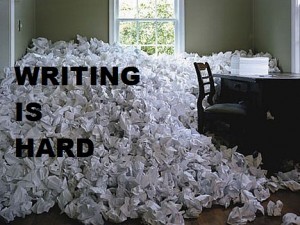 I’m a writer. It’s what I do. And you would think that if this is what I chose to be, that I would never struggle. You would be wrong.
I’m a writer. It’s what I do. And you would think that if this is what I chose to be, that I would never struggle. You would be wrong. 
Writer’s Block is real. And right (write?) now it is affecting my blog. I have a novel in progress that is coming along, mostly. But getting blog posts done every week has turned into a struggle. As I head into my busiest season of writing, this is going to be a big problem unless I get my act together. Even though I’m a very strong essay writer, and always have been (and that’s all a blog really is, after all), there are times I’m really strapped for ideas.
Fortunately, I’ve found some help to get me back to pumping out those blog posts, and thought I’d share that with you in case you are suffering from blog-writer’s block too.
Writers Write, a site from South Africa that offers writing classes, has a great graphic that will easily point you to some ideas, just with a few short words and pictures. Cute, quick, and gives very basic ideas that you can flesh out quickly into a full blog post.
HubSpot’s Blog Topic Generator works by asking you for three nouns. That’s it. Then it generates topics for you. You can do it over and over until you get something you can work with.
Build Your Own Blog has the easiest random blog topic generator I’ve ever seen. Simply click the big orange button that says “Generate Blog Post Idea.” Perfect!
Portent’s Content Idea Generator is cute – it looks like a blackboard, you type in a few key words, and it gives you four things to thing about. Easy-peasy. I’ve used this one multiple times. I also think this one is the most hilarious. I typed in “romance Writers Ideas” and got back “6 unexpected ways romance writers can give you better hair.” And yes, I could make a blog post out of that, couldn’t you?
Content Ideator from Content Forest lets you type in a key word, and get back suggested blog titles. This is usually enough. However, you can only put in one word at a time. It does have an annoying popup asking you to sign up for their newsletter, so I don’t use this one as much as I use some of the others.
Tweak Your Biz uses a key-word generator to give you a blog title. They are sorted by category, too, which can be helpful.
Molly Green has a blog post with “101 Fabulous Blog Topic Ideas.” Great stuff here, and plenty of ideas to work from. In fact, I got the idea for doing this blog, from reading hers.  Doesn’t get much better than that!
Doesn’t get much better than that!
I hope some of these links can help you break that blog-block you’ve got going. we all get it once in a while, or more than once in a while. It’s great to know there is help out there for us, isn’t it?
October 17, 2015
The Oxford Comma
I have been reading Berkeley Breathed’s “Bloom County” comic for many years. When he stopped drawing and publishing, there was a huge void in my daily comic section of the paper. But he’s back to drawing and making pithy pronouncements about our crazy politicized world, and I’m a happy reader. Part of his return to publication and syndication included an ongoing storyline about Opus and Bill the Cat running for president. Their platform? The importance of the two spaces after a period. It reminds me of another ongoing formatting and grammatical argument: The Oxford Comma.
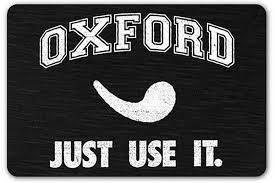 Some people may not even know what the Oxford comma is, but others, like myself, know what it is and further, insist upon its use. While journalists and some other standard-makers insist the Oxford comma is not necessary anymore, I would posit that it should be used at all times. Yes, it saves a little ink and one typespace, to not use it. But nothing is clearer than using that little comma to separate things in a list.
Some people may not even know what the Oxford comma is, but others, like myself, know what it is and further, insist upon its use. While journalists and some other standard-makers insist the Oxford comma is not necessary anymore, I would posit that it should be used at all times. Yes, it saves a little ink and one typespace, to not use it. But nothing is clearer than using that little comma to separate things in a list.
If you don’t know what the Oxford comma is, it is the use of a final comma before the last item in a comma-deliniated list. I had toast, eggs, and orange juice for breakfast. I had to choose between a black dress, a purple pantsuit, and a yellow mumu. Of course all of these sentences can be written without that final comma. But there are times that final comma is really necessary. And if you are writing a lot, it is best to keep in the habit of using that third comma. That way you never leave it out when you should have left it in, because your habit was not to use it.
I know there are arguments on either side of the issue. People can have strong feelings about it, and can have loud arguments about it. Like most things where there are two potential answers that are both correct (Does the toilet paper roll go over or under? Is that dress black and blue, or gold and white?), people can come down pretty hard on “their side” and be unable to see the other side. I am no different. I am going to insist on the Oxford comma, no matter what. And when I was still teaching English (before the Internet), I insisted on the Oxford comma. I think it makes things very clear, with no ambiguity, to use it. And I’m close to militant about it, no matter what style guides are trying to tell me to do.
In other words, you can have my Oxford comma when you pry it from my cold, dead fingers. Also, those two spaces after the period? Yup, those need to stay, too. Naturally.
How do you feel about the Oxford comma? Do you use it religiously, or only when a list wouldn’t make sense without it? What arguments have you heard either way for its use or abandonment? Let me know in the comments!
Fairest of the Faire – available now!
Schoolteacher Connie Meyers is suddenly a young widow, her husband killed in a horrific car accident. Heartbroken to find out he had gambled away everything they had, she moves to her sister-in-law’s Midwest home to rebuild her life. A trip to the local Renaissance Faire with her nieces leads to a summer job as a costumed storyteller.
Avowed bad boy and fair performer Gage Youngblood is infatuated with Connie at first sight. Despite his deliberately commitment-free life, and Connie’s don’t-touch-me attitude, he soon has her in his arms, realizing quickly she is also in his heart.
When she is threatened by her late husband’s bookie, he steps into the role of protector, his fate forever sealed with hers.
Available NOW!
Buy at Wild Rose Press: (eBook and paperback)
Buy at Amazon (Kindle and paperback)
Buy at Barnes and Noble (Nook)
October 10, 2015
Born Geek, and Spoiled Because Of It
 I don’t know if I was born a geek, but I sure fell into geekness when technology started to evolve in the late 80’s and early 90’s. By then I was a grown woman, with a husband and children. Years of secretarial and administrative work meant that when the PC first came out, I was one of the first to use one. And boy, have they evolved since then. Since the early 90’s, more than 20 years now, I’ve had a computer in my home. Much of that time, I’ve had multiple computers. Today, we have one desktop (my husband’s), three laptops (two of which need repair), three tablets (iPads and a Samsung), and three smart phones (all Samsung). I have a closet where I keep spare parts, cables, and keyboards. And I’m my extended family’s “technical support.”
I don’t know if I was born a geek, but I sure fell into geekness when technology started to evolve in the late 80’s and early 90’s. By then I was a grown woman, with a husband and children. Years of secretarial and administrative work meant that when the PC first came out, I was one of the first to use one. And boy, have they evolved since then. Since the early 90’s, more than 20 years now, I’ve had a computer in my home. Much of that time, I’ve had multiple computers. Today, we have one desktop (my husband’s), three laptops (two of which need repair), three tablets (iPads and a Samsung), and three smart phones (all Samsung). I have a closet where I keep spare parts, cables, and keyboards. And I’m my extended family’s “technical support.”
How has that technology helped me as a writer? Well, for one thing, the word processor changed everything for me! All those years of typing letters on an electric typewriter, and retyping those letters because of the typos… I don’t know how I did it without a word processor. Now, I just type and don’t worry about the typos until later. Some of the typos the word processor corrects as I mistype them. Some I have to go back and fix. But it’s a darned sight better than having to retype everything. It amazes me that writers pre-typewriter would have written everything long-hand. Editing must have been a nightmare!
The other thing that technology has done is made my writing portable. I can take my trusty laptop to any place I want – a park, coffee shop, my mom’s kitchen table, my car, the top of a mountain, the beach – to write. I don’t even need a live electric connection for at least two hours. My laptop is complete as it is, and weighs about 1.7 pounds. Easy to tote around. It has a touchpad, and keyboard, and screen. I don’t need any peripherals. I just grab it and go. Could Charles Dickens have done that? Well, he could drag around a stack of paper, and his fountain pen and ink pot, but I’ll bet writers weren’t scribbling in the corners of coffee shops in those days.
But I think the thing I appreciate most these days is my dual monitors. As I age, reading glasses become a bigger part of my day-to-day life. I can no longer see those details that I want to see, or see more than a handful of paragraphs on a page. And if I want to compare documents, or have some research up on the screen to reference as I write, there’s just no room for that. But if I plug in my extra monitor, giving me two monitors to work with, it makes all the difference. I can have my research, notes, or a previous draft up on one monitor, and have my working space up on the other. It is easy to cut and paste and see where I’m going when I do that. I can also keep an eye on things like email by having it open in that spare space, as well. I am so used to dual monitors that when I’m at the coffee shop, I get frustrated by not being able to see everything. If you’re a writer and using a desktop or laptop, you can have dual monitors too. It’s easy to set up, and I can guarantee it will be worth spending the money. I have a Dell 22-inch extra monitor, that cost me about $150 on sale.
I am thankful to be a geek, even though all that technology can sometimes be distracting. We all have our hobbies, right?
What do you appreciate about technology as a writer? Let me know in the comments!
Fairest of the Faire – available now!
Schoolteacher Connie Meyers is suddenly a young widow, her husband killed in a horrific car accident. Heartbroken to find out he had gambled away everything they had, she moves to her sister-in-law’s Midwest home to rebuild her life. A trip to the local Renaissance Faire with her nieces leads to a summer job as a costumed storyteller.
Avowed bad boy and fair performer Gage Youngblood is infatuated with Connie at first sight. Despite his deliberately commitment-free life, and Connie’s don’t-touch-me attitude, he soon has her in his arms, realizing quickly she is also in his heart.
When she is threatened by her late husband’s bookie, he steps into the role of protector, his fate forever sealed with hers.
Available NOW!
Buy at Wild Rose Press: (eBook and paperback)
Buy at Amazon (Kindle and paperback)
Buy at Barnes and Noble (Nook)
October 3, 2015
Writing What You Know
I grew up in a family of five. My Dad, a rural grown-up farmboy, came from a family of six. One of his brothers had 9 children. His other brother had four children. This means that during the holidays, plus several weeks each summer, plus one weekend a month, there was a huge contingent of us at the family farm. Mealtimes were noisy affairs as nearly 40 people needed to be fed. There were more men than women, and the kitchen was women’s work. That was just the way it was in those days. It doesn’t mean that the men didn’t do their share – they most certainly did. It just wasn’t always in the kitchen.
I have many happy memories of times spent in the busy little stone house built on the side of the hill, overlooking green fields of feed crops and cattle, and in the distance, you could see the little river that wound its way across the middle of Missouri. In the summer, there was canning of produce, peeling of horseradish, and the making of peach ice cream (by hand, in a crank freezer). And there were horseback rides, pig poking (from OUTSIDE the fence), poison ivy rashes, and the search for mushrooms on the damp northern sides of the hills. And then there were the meals. One farm table and two makeshift tables filled with talking, laughing, eating people, noshing on good country food that was intended to fatten you up for a long winter.
These are some of the memories that appear in my novels. In my first novel I recreated a kitchen/dining scene that included a large family, with grandchildren, all gathered around the table eating hearty German foods. In my current work-in-progress, I have an entire scene built around the making of fresh peach pie in a farmhouse, and a lusty trip to the barn in the rain. Yes, I said lusty, because barns are great places for a rendezvous! In Fairest of the Faire I created the fair based on my memories of attending one, including elements of the joust. The physical description of Gage Youngblood matches that of a character that I saw at a fair.
In my mind, this is a lot about “writing what you know.” We can make up all kinds of things, but to get it “real,” it helps to be able to bring up a memory that can fill out that scene. When things seem plausible, or the descriptions make your mouth water or your gut tighten, then you’ve succeeded in making it believable. What better to draw on than your own experiences in life? What do you know more intimately than those things you experienced for yourself?
I definitely write what I know. I can describe clearly my grandmother’s method for frying squirrel for dinner (it’s a lot like chicken), and my cousin’s way with a recalcitrant dairy cow, and how long it took to make peach ice cream by hand with a crank freezer. And those are just some of the memories I can use.
What about your memories are you using in your work? Tell me about it in the comments!
September 26, 2015
What’s In a Name?
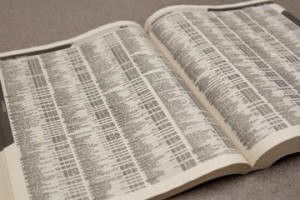 How many times have we, as writers, sat down to write something new, and gotten stuck on the very basics – picking names for our characters? I know this has happened to me more than once, and I’ve put in a “stand-in” name to take the place of what I’ll eventually use. A find and replace later will fix it.
How many times have we, as writers, sat down to write something new, and gotten stuck on the very basics – picking names for our characters? I know this has happened to me more than once, and I’ve put in a “stand-in” name to take the place of what I’ll eventually use. A find and replace later will fix it.
But I’d like to start with the right name to begin with, and sometimes I won’t allow myself to write until I figure out what that character’s name is. It seems important, somehow, that they have the right name. At least, for the hero and heroine, it feels like it is important. For ancillary characters, names can wait, or any name will do.
So where do I find names? I have multiple sources, but my favorite for last names has to be the phone book. Not that we really get those anymore, but I have an old rather dog-eared one I use to look at names. I lived in a large metropolitan area up until a few years ago, so our white pages were four inches thick. Plenty to choose from there. For first names, I often hit my “60,000 Baby Name” book. If I can’t find it in there, it probably doesn’t exist.
But what about ethnic names, historical names, etc.? Well, in this case, the web is my friend. There are hundreds of websites that list names from all ethnicities and nationalities. There are lists for Jewish names, Mexican names, Portuguese names, Italian names, etc. Need a name for an Aboriginal from Australia? There are web sites for that too!
I have also been known to use old families from my own background when I’m looking for something unusual. I might also write down an unusual name of someone I read about in the newspaper. I have a running list of unusual names on my bulletin board. I keep adding to it. You never know when you’re going to need an unusual or striking name for a character. Having that running list means I’ve always got something to pick from.
How do you pick names for your characters? What are your favorite sites to look at, or favorite ways to look at names?
September 19, 2015
Contemporary World-Building
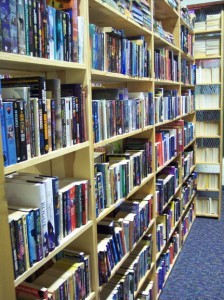 I always say I don’t write historical romance novels because the research is daunting. If you get something wrong in a historical, your readers will know. Were there trains in Wyoming in 1865? Did people take baths in Italy in 1838? What did they eat on the long journey the Santa Maria took from the old world to the new world? What rights did women have in Colonial India?
I always say I don’t write historical romance novels because the research is daunting. If you get something wrong in a historical, your readers will know. Were there trains in Wyoming in 1865? Did people take baths in Italy in 1838? What did they eat on the long journey the Santa Maria took from the old world to the new world? What rights did women have in Colonial India?
It’s a lot of work. And I’m lazy. I do have two historical novels I’ve written, but are not ready for publication. I know I’ve gotten a ton of elements wrong. I know there is more research to be done. I would just change them to contemporaries to make it easier, but the tropes I’m using would never translate to contemporary times. I’ve thought about both of those stories for years. The stories are good, the plots are awesome. It’s all that troublesome historical detail that has me hung up.
So I write contemporaries. But even in contemporary stories, there is research, and world building. How many hours a day does an architect work, and how much money does he make? Do firemen sleep at their fire stations? Can a woman who owns a coffee-shop-slash-bakery ever take a day off? What does a rural veterinarian’s day look like?
This takes some research too. I don’t want my characters to seem unrealistic, and I also want them to live “normal” lives, whatever that means. I know a lot about what I do for a living, and what a day for me is like, but I’m not writing about me. So the research has to happen.
I also have to build realistic scenes, realistic events, and realistic living situations. What is the weather in October like in Wisconsin, as opposed to California? What are holiday events like in rural areas, as opposed to urban areas? What kinds of industry might be more likely in Pennsylvania, as opposed to Montana? Is there a lake, ocean, or river? Or just a lot of rocks and pine trees? Are there wild animals, or just the neighbor’s dogs? j
This takes thought, as well as some research. In my first novel, set in a generic town in Wisconsin in October, the heroine runs a bed and breakfast in a town known for fall tourism and antiquing, and the hero is a fire chief. Halloween and the season’s first snowfall came at the same time in that story, because, in Wisconsin, that can happen. I wouldn’t have known that if I hadn’t gone and looked it up. The young fire chief lived at the fire station. The heroine was extremely busy on the weekends, but not so much during the week, as she had guests in her B & B from Friday through Sunday.
Scene-building and world-building are important to make a story believable, but also to set a certain tone for the characters, and by extension, the readers. We read for entertainment, and all of that work on building the world our characters are living in, even if it is modern day, makes all the difference. Our readers get to escape to someone else’s, world, even if only for a couple hundred pages.
My research begins with Google, and often ends at the local library and a well-read reference librarian. Yes, even for a contemporary novel, there is research to be done. It’s a good thing I like libraries. And there’s no better research partner than an excited reference librarian.
How do you do your research for world-building? Do you write a particular genre because of the research (either because you like the research or are avoiding doing too much research, like me)? What are your go-to sources? Would love to hear your comments!
September 12, 2015
Fall Beckons, As Does My Writing Desk
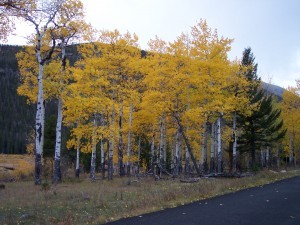 Fall approaches, and quickly. The over-90 degree weather of a couple weeks ago is already a memory, and we wake up to temperatures in the upper 40’s. Frost is still a few weeks away, but you can start to feel that bite in the air. Here in Colorado, the high country is already ablaze with the gold of the Aspen in fall color. Their coin-shaped leaves dance in the lightest breeze, reminding one of a belly dancer’s coined belt. Fall is here.
Fall approaches, and quickly. The over-90 degree weather of a couple weeks ago is already a memory, and we wake up to temperatures in the upper 40’s. Frost is still a few weeks away, but you can start to feel that bite in the air. Here in Colorado, the high country is already ablaze with the gold of the Aspen in fall color. Their coin-shaped leaves dance in the lightest breeze, reminding one of a belly dancer’s coined belt. Fall is here.
It is cliche to say this is my favorite time of year. It is many people’s favorite time of the year. The cool, crisp air, the gorgeous fall colors, the evenings that beg for a fire in the fireplace (or firepit, in our case), and the smells of filling comfort foods like soups and stews.
For me, this time also means a natural slow-down in the mundane activities of everyday life. The gardens are done, or almost done. The bounty of summer has been preserved in freezers and jars and dehydrators, to be enjoyed over the winter. There is no longer grass to cut, sporting events to attend with children, or outdoor activities to take up every weekend.
It is time to…WRITE! Fall means I have more time to write. More time to sit and think. More time to go over previous work and make edits. A long, cool afternoon spent at my writing desk, wrapped in my favorite sweater, a steaming cup of tea at the ready, is my idea of a perfect day. Nothing calls to me, no things that “have” to be done. I have few distractions.
Fall comes early here in Colorado, at least, earlier than I’m used to with my Midwestern upbringing. But that’s okay. Summer is intense here, and it is nice to know this break is coming. And of course, there is also the pull of National Novel Writing Month, which happens in November. I’ve never missed a year in the last 12. I don’t intend to miss year 13.
What do you like best about fall? Is it also your writing time?
Fairest of the Faire – available now!
Schoolteacher Connie Meyers is suddenly a young widow, her husband killed in a horrific car accident. Heartbroken to find out he had gambled away everything they had, she moves to her sister-in-law’s Midwest home to rebuild her life. A trip to the local Renaissance Faire with her nieces leads to a summer job as a costumed storyteller.
Avowed bad boy and fair performer Gage Youngblood is infatuated with Connie at first sight. Despite his deliberately commitment-free life, and Connie’s don’t-touch-me attitude, he soon has her in his arms, realizing quickly she is also in his heart.
When she is threatened by her late husband’s bookie, he steps into the role of protector, his fate forever sealed with hers.
Available NOW!
Buy at Wild Rose Press: (eBook and paperback)
Buy at Amazon (Kindle and paperback)
Buy at Barnes and Noble (Nook)
September 5, 2015
Fiction Reading That Influences Writing
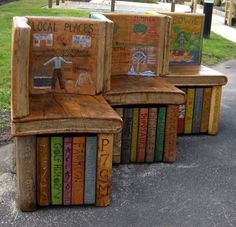 I read a lot. I read articles online, I get two magazines each month (Mother Earth News and MaryJane’s Farm), and I have a stack of books I want to read in my closet, on my nightstand, and on my bookshelf in my office. I have books on writing, editing, communicating. I have books full of interesting and obscure words, books of funny phrases and colloquialisms, books of physical descriptions, and more than one dictionary and more than one thesaurus. I have books of general fiction, short stories, women’s fiction, and romance. I have books I can’t categorize.
I read a lot. I read articles online, I get two magazines each month (Mother Earth News and MaryJane’s Farm), and I have a stack of books I want to read in my closet, on my nightstand, and on my bookshelf in my office. I have books on writing, editing, communicating. I have books full of interesting and obscure words, books of funny phrases and colloquialisms, books of physical descriptions, and more than one dictionary and more than one thesaurus. I have books of general fiction, short stories, women’s fiction, and romance. I have books I can’t categorize.
How many of the things I read influence my writing? Probably all of it, to one degree or another. My magazines are mostly about gardening and cooking, and those are practical skills that I use every day, especially this time of year. But I am also letting some of that “country” into my current WIP. The non-fiction books help me with crafting my novels – how to build characters, how to write effective opening scenes, how to craft my sentences for maximum effect. I’ve been writing for more than 40 years, but I always have new things to learn, new techniques to try, new ways of saying old things.
But what about all that fiction? I am by no means a voracious reader, but I do read fiction regularly. I also have “no patience for bad books,” as I like to say sometimes. If a book doesn’t catch me in the first 50 pages, I’m not likely to finish it. It will go to the discard pile in a hurry. Since I read a broad variety of fiction, I feel I’m always stretching my wings with fiction. I used to read romance exclusively – historicals wen I was younger, and contemporaries as I passed 30. I still read a lot of romance. But I read other things as well. And I think all of those things help me to see a bigger world. And sometimes, I get ideas about something I want to write, from some element of a story I’ve read.
To be clear, I am not lifting scenes from fiction I’ve read and using them in my own work. As a “spiral writer” who writes around a small seed of an idea, that would be impractical to say the least. But a scene in a novel, or a description of a place or person, might spark an idea that I will take into a novel that I am working on. And I think that is one of the biggest values, for me, of reading fiction.
In a perfect world, I’d spend half my day writing, and half my day reading. But I live in the real world, a practical world. There is the day J.O.B., the gardens in my own yard I need to maintain, the cooking and cleaning required of any wife and mother, the crafts I like to do – sewing, crochet, and whatever else I fancy at any given moment. There is time to spend with family and friends, and events to attend in my small-town-big-city. By necessity, my reading time is limited. But I still do it, and I know it influences my writing. And that’s just as it should be.
Fairest of the Faire – available now!
Schoolteacher Connie Meyers is suddenly a young widow, her husband killed in a horrific car accident. Heartbroken to find out he had gambled away everything they had, she moves to her sister-in-law’s Midwest home to rebuild her life. A trip to the local Renaissance Faire with her nieces leads to a summer job as a costumed storyteller.
Avowed bad boy and fair performer Gage Youngblood is infatuated with Connie at first sight. Despite his deliberately commitment-free life, and Connie’s don’t-touch-me attitude, he soon has her in his arms, realizing quickly she is also in his heart.
When she is threatened by her late husband’s bookie, he steps into the role of protector, his fate forever sealed with hers.
Available NOW!
Buy at Wild Rose Press: (eBook and paperback)
Buy at Amazon (Kindle and paperback)
Buy at Barnes and Noble (Nook)
August 29, 2015
Five Things to Include in Your Promo Tweets
I am by no means an expert on Twitter. But as an author with a small publishing house, where we do much of our own promotion through cross-tweeting and other social media, I’ve learned a few things in the last several months that might help others.
Tweets, by their very nature, are supposed to be short and eye-catching. But they also need to include all of the information you want to convey to the follower. Since tweets flash fast and are quickly lost, you only have a short amount of time to catch someone’s attention. So your tweet has to be effective.
So first, be sure you are identified in your tweet. If you’re asking people to share your tweet (via a mailing list or facebook), your name needs to be in that tweet or the reader won’t know who you are. So always start out with your twitter name. In my case, @SusabelleKelmer goes at the front end of any tweet I’m expecting people to share or retweet.
Second, what are you trying to get people to do? Want them to read your book or your blog? You need a catchy tag line or a blog title to go with it. In my case, I am usually tweeting blog posts, so mine would say Why is That Ladder on the Side of the Cliff?” If I am posting about my book, I’m going to be trying to get a tagline that gets people’s attention. It has to be short. A few words. A short sentence. “…those hips, just made for a man to hold.”
Third, what’s the name of your book? Make sure that’s in there. In my case, Fairest of the Faire.
Fourth, don’t forget those has tags! What are you doing that you want to share? Are you reading, writing, sleeping, cooking? Hash tags help people search for things, and hashtags for me help to categorize where I’m going or whose attention I’m trying to grab. For writers/authors, there’s a great list of writing hashtags you can use. There’s a great list of hash tags every writer should know at the Aero Gramme Studio website. I use #amwriting or #amreading quite a bit, but there are plenty of others. Also, don’t forget to tag your publisher as well. In my case, #TWRP for The Wild Rose Press. Your publisher will retweet your tweet if they are tagged, and that gets you a ton more reach.
Fifth and last, where’s that link? Not every tweet should have a link that leads somewhere else, but if you are trying to sell your book, you need a link for people to go buy it. Twitter does something great with links, too – it shortens them so you only end up using 20 characters for that link, even if the link is way longer than that. Every looked at your Amazon link to your books? That thing is like 4,000 characters long! Okay, not really, but it’s definitely more than four!
Extra Credit Points: How about adding a picture? You can add a picture of your book cover, or some scene that shows what you are talking about in your tweet. If I am talking about making peach jam, then I’m probably going to add a picture of peach jam on a slice of bread to catch people’s eye. If I’m posting about my book, I’m going to post my book cover. Or if I’m posting about something nifty I just bought, I might include a picture of that thing. Sometimes pictures will catch someone’s eye when the words don’t. So don’t be afraid to add this element.
So, to conclude…here’s what a tweet from me about my book would look like:
@SusabelleKelmer …Those hips, just made for a man to hold. Fairest of the Faire #amreading #romance #TWRP http://www.amazon.com/Fairest-Faire-S...
And this tweet still has 10 characters left I could add, which means I could add another writer hashtag, and still be within my 140-character limit.
Do you have tips to share as well? I’d love to hear them! Leave me a comment!
Fairest of the Faire – available now!
Schoolteacher Connie Meyers is suddenly a young widow, her husband killed in a horrific car accident. Heartbroken to find out he had gambled away everything they had, she moves to her sister-in-law’s Midwest home to rebuild her life. A trip to the local Renaissance Faire with her nieces leads to a summer job as a costumed storyteller.
Avowed bad boy and fair performer Gage Youngblood is infatuated with Connie at first sight. Despite his deliberately commitment-free life, and Connie’s don’t-touch-me attitude, he soon has her in his arms, realizing quickly she is also in his heart.
When she is threatened by her late husband’s bookie, he steps into the role of protector, his fate forever sealed with hers.
Available NOW!
Buy at Wild Rose Press: (eBook and paperback)
Buy at Amazon (Kindle and paperback)
Buy at Barnes and Noble (Nook)

